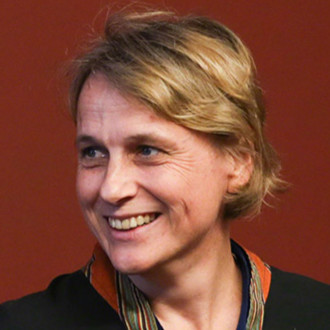
Biodiversity – an abbreviation of biological diversity – is the variety of life on Earth, from the tiniest bacteria to the largest mammals. Without biodiversity we have no air to breathe, no water to drink, no food to eat and we simply will not be able to live.
Global biodiversity collapse is threatening human and planetary health. The current decline in species has been defined as “unprecedented”, science is speaking about the sixth mass extinction, and global business leaders about growing concerns for the global economy. We are dangerously close to – and in some cases, crossing – catastrophic ecological tipping points.
But it is not too late. We must move with speed and purpose, leverage past successes, and learn from previous shortfalls to adopt a bold, innovative approach unlike anything attempted or possible before.
Over the past three decades, government environmental ministries, scientists and civil society have developed over five hundred biodiversity-related conventions and multilateral environmental agreements. Chief among these are the National Biodiversity Strategies and Action Plans (NBSAPs), established at the 1992 Earth Summit as the principal means for enacting the Convention on Biological Diversity (CBD).
These plans aim to mainstream biodiversity considerations into national policies. Yet despite some successes, NBSAPs have largely failed: society has yet to grasp that our fate urgently relies on biodiversity. Challenges abound, including barriers to reaching broad segments of society, lack of context-specific knowledge, and the risk of co-opted and harmful narratives around biodiversity.
Moreover, progressing environmental knowledge and awareness toward action is not linear. And, outdated models of science communication fail to take into account that values and agency are strongly influential in driving behavioural change.
So, what does it take to mobilize society across sectors and accelerate awareness, knowledge and action with unprecedented speed and impact? Research shows that 25% of a population can trigger a social tipping point. But past studies suggest another pathway: if just 3.5% take coordinated action as highly visible and connected change-makers, they can make seemingly impossible policy and societal change.
Changemakers, biodiversity champions are in every segment of society: innovative private sector companies; inspiring leaders; members of civil society that are aware of the problem, willing to act, and/or already acting; and farmers and Indigenous Peoples – the world’s greatest biodiversity stewards and teachers.
We need to revolutionize how we raise awareness, educate, and drive lasting behaviour change for biodiversity. We need:
- Growing power of action-oriented communities: The world has moved from individual action to dynamic, collaborative communities of like-minded individuals. We need targeted bottom-up approaches to accelerate the work of diverse existing local communities and biodiversity champions, brokering their connections to regional and global networks, to drive societal shifts in thinking, decision-making, and behaviour.
- A rapid digital revolution offers innovative approaches: In 2023, over 64% of the global population is online, up from 39% in 2013. This connectedness, combined with new technologies, makes it possible to launch innovative campaigns and foster creative society-wide participation which was previously impossible – while collaborating with local partners to reach across the digital divide.
- Advancements in organizational capacity and partnership: The capacity of development and media organizations to collaborate and deliver outcomes is far greater than a decade ago. While past initiatives like the CBD’s Green Wave showed promise, organizations today are better equipped to realize their potential. We need an inclusive partnership model that can swiftly convene roundtables and facilitate co-creation among a growing network of local and global partners.
To secure life as we know it, and to halt and reverse biodiversity loss, a transformation is required at every level of society: individuals, employers, institutions and international partners will need to work together to understand the trade-offs, agree on compromises and seize opportunities.
Regulatory frameworks and law enforcement are not enough to turn the tide: knowledge and awareness of the importance of biological diversity for everyone’s lives is an important lever for transformative change.
What is needed is a biodiversity plan that resonates with local livelihoods, culture and aspirations – we need a biodiversity plan for all.
We want you to share Forests News content, which is licensed under Creative Commons Attribution-NonCommercial-ShareAlike 4.0 International (CC BY-NC-SA 4.0). This means you are free to redistribute our material for non-commercial purposes. All we ask is that you give Forests News appropriate credit and link to the original Forests News content, indicate if changes were made, and distribute your contributions under the same Creative Commons license. You must notify Forests News if you repost, reprint or reuse our materials by contacting forestsnews@cifor-icraf.org.













